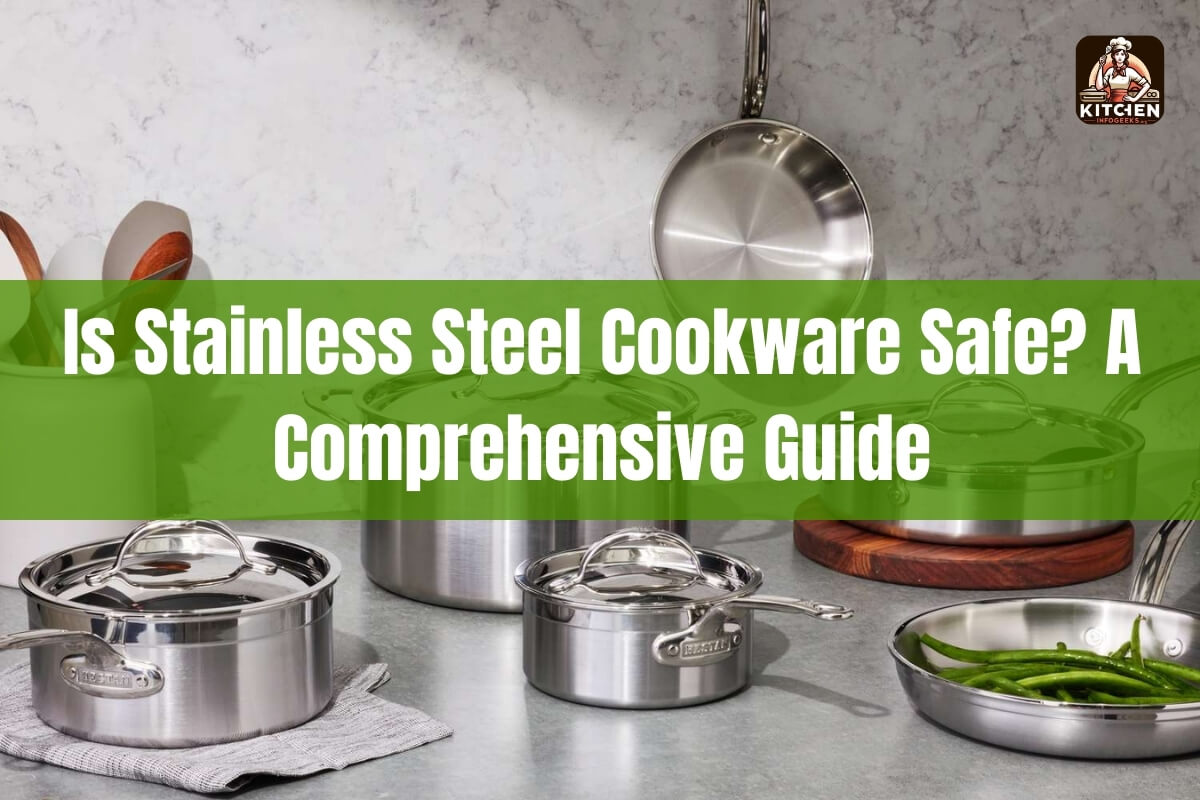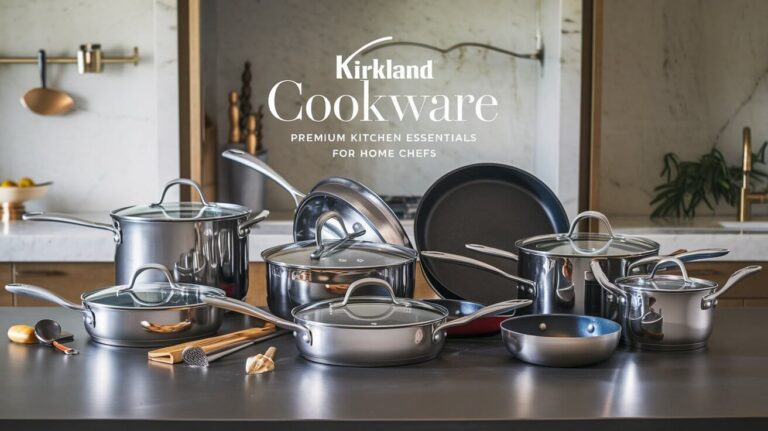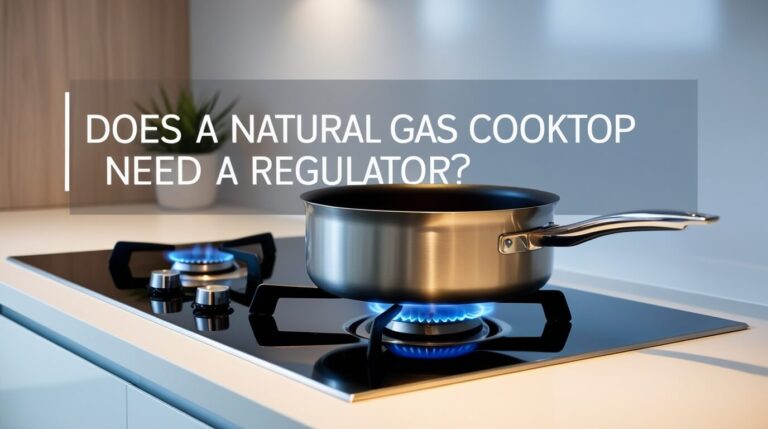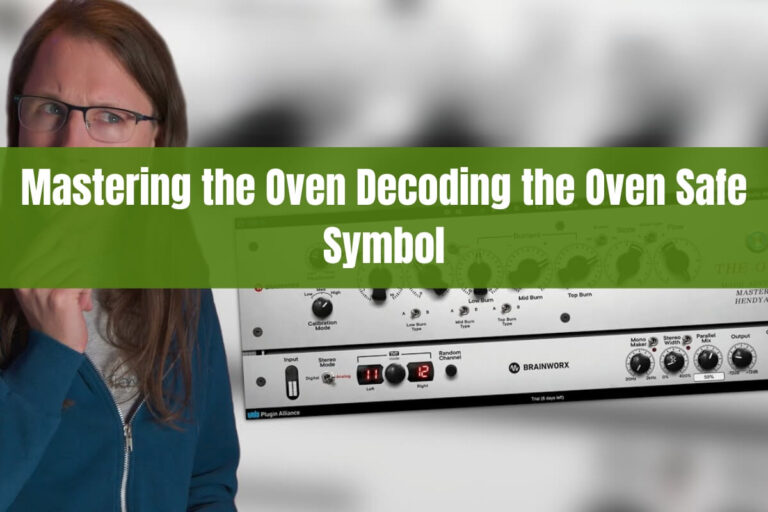
The short answer is yes, stainless steel cookware is generally considered a safe option for home cooking. Stainless steel is an alloy that contains chromium, which makes it resistant to rust and tarnishing. It is also highly durable, easy to clean, and doesn’t have any engineered nonstick coatings that could potentially leach chemicals.
However, it’s important to understand that not all stainless steel is created equal. Lower-quality grades of stainless steel may contain higher levels of heavy metals like nickel and chromium, which can potentially leach into food, especially when cooking acidic foods.
In this comprehensive guide, we’ll dive deep into the safety of stainless steel cookware, explore the different grades and compositions, discuss the potential risks, and provide tips on choosing the safest options for your kitchen. We’ll also cover some alternative cookware materials to consider if you have any concerns about stainless steel.
Understanding Stainless Steel
Stainless steel is an alloy, which means it’s a metal composed of multiple metallic elements. The primary components of stainless steel are iron, chromium, and, in many cases, nickel.
The chromium content is what makes stainless steel resistant to rust and corrosion. It forms a thin, invisible layer on the surface of the steel that protects it from oxidation. Nickel, on the other hand, is added to improve the steel’s strength, durability, and luster.
There are different grades of stainless steel, and the specific composition can vary. The most common grades used in cookware are:
18/0: This grade contains 18% chromium and no nickel, making it more prone to corrosion but less expensive. 18/8: Also known as 304 stainless steel, this grade contains 18% chromium and 8% nickel, making it more corrosion-resistant and durable. 18/10: This is the highest-quality stainless steel used in cookware, with 18% chromium and 10% nickel. It’s the most corrosion-resistant and has a polished, shiny appearance.
It’s important to note that the higher the nickel content, the more expensive the stainless steel will be. However, the increased nickel also improves the steel’s resistance to corrosion and gives it a more attractive finish.
Potential Risks of Stainless Steel Cookware
While stainless steel is generally considered a safe option for cookware, there are a few potential risks to be aware of:
Leaching of Heavy Metals
The main concern with stainless steel cookware is the potential for leaching of heavy metals, such as nickel and chromium, into the food being cooked. This is more likely to occur when cooking acidic foods, like tomato sauce, for extended periods.
The amount of leaching can vary depending on the grade of stainless steel and the quality of the cookware. Higher-quality, 18/10 stainless steel is less prone to leaching than lower-grade, nickel-free stainless steel.
It’s worth noting that the amount of heavy metals that may leach into food is generally considered safe for most people. However, individuals with nickel sensitivities or allergies may want to avoid stainless steel cookware, as the nickel can trigger adverse reactions.
Exposure to Toxic Fumes
Stainless steel cookware can release toxic fumes when heated to extremely high temperatures, typically around 1,650-1,700°F. These temperatures are only reached when welding or using the cookware in industrial settings, not in a home kitchen.
Under normal cooking conditions, stainless steel does not produce any harmful fumes. However, it’s essential to ensure that your kitchen is well-ventilated and to avoid heating the cookware to dangerously high temperatures.
Benefits of Stainless Steel Cookware
Despite the potential risks, stainless steel cookware offers several benefits that make it a popular choice for home cooks:
Durability and Long-Lasting
Stainless steel is an exceptionally durable material that can withstand years of use with proper care. It won’t warp, chip, or scratch easily, and it’s resistant to corrosion and staining. With proper maintenance, a high-quality set of stainless steel cookware can last for decades.
Easy to Clean and Maintain
Stainless steel is a non-porous material, which means it doesn’t absorb food odors or stains. It’s also easy to clean, either by hand or in the dishwasher. Stainless steel cookware doesn’t require any special seasoning or maintenance, unlike cast iron or some nonstick pans.
Excellent Heat Retention and Even Cooking
Stainless steel is an excellent heat conductor, which helps to ensure even cooking and temperature distribution throughout the pan or pot. This makes it a great choice for tasks like searing meats, sautéing vegetables, and baking.
Choosing Safe Stainless Steel Cookware
When selecting stainless steel cookware, it’s essential to choose high-quality options that are less prone to leaching and other potential issues. Here are some tips to keep in mind:
Opt for Higher-Grade Stainless Steel
As mentioned earlier, 18/10 stainless steel is the highest-quality and most durable option. It contains a higher percentage of nickel, which makes it more resistant to corrosion and leaching.
Avoid cheaper, nickel-free stainless steel, as it is more prone to corrosion and may release higher levels of chromium into your food.
Inspect for Scratches and Damage
Over time, stainless steel cookware can develop scratches or other damage to the surface. This can increase the risk of leaching, as the protective chromium layer is compromised.
Inspect your pots and pans regularly and replace any that have significant scratches or pitting. Avoid using metal utensils, which can more easily scratch the surface.
Properly Care for Your Cookware
To maintain the safety and longevity of your stainless steel cookware, it’s essential to care for it properly. Avoid cooking acidic foods like tomatoes, citrus, or wine for extended periods, as this can increase the risk of leaching.
Additionally, use wooden, silicone, or plastic utensils to prevent scratching the surface. When cleaning, avoid abrasive scouring pads or harsh chemicals, and stick to mild soap and water.
Alternatives to Stainless Steel Cookware
If you have concerns about the potential risks of stainless steel cookware, or if you have a nickel sensitivity, there are several alternative materials you can consider:
Ceramic Cookware
Ceramic cookware is a non-toxic, nonstick option that’s free from metals and other potentially harmful materials. It’s easy to clean and maintain, and it’s generally considered a safe choice for home cooking.
Cast Iron Cookware
Cast iron is another durable and long-lasting option that’s free from coatings or chemicals. While it can release small amounts of iron into your food, this is generally not a concern for most people and may even provide a dietary benefit.
Glass Cookware
Glass cookware, such as Pyrex or borosilicate glass, is a safe and non-reactive option that won’t leach any chemicals or heavy metals into your food. It’s also easy to clean and maintain.
Tips for Safely Using Stainless Steel Cookware
To ensure the safest possible use of your stainless steel cookware, follow these tips:
- Avoid cooking highly acidic foods, like tomato sauce, for extended periods. The acidity can increase the risk of leaching.
- Use wooden, silicone, or plastic utensils to prevent scratching the surface of the cookware.
- Clean your stainless steel cookware with mild soap and water, avoiding abrasive scouring pads or harsh chemicals.
- Store your cookware properly to prevent any potential damage or scratches.
- If you notice any significant scratches or pitting, consider replacing the affected piece.
Conclusion
In conclusion, stainless steel cookware is generally considered a safe option for home cooking, as long as you choose high-quality products and take proper care of them. By understanding the potential risks, selecting the right grade of stainless steel, and following best practices for use and maintenance, you can enjoy the many benefits of this durable and versatile cookware material.
Remember, while the risk of leaching or toxic fume exposure is relatively low in a home kitchen setting, it’s essential to be mindful of your cookware’s condition and to make informed choices that prioritize the safety and health of you and your family. By following the guidelines outlined in this article, you can feel confident in your decision to use stainless steel cookware in your kitchen.






